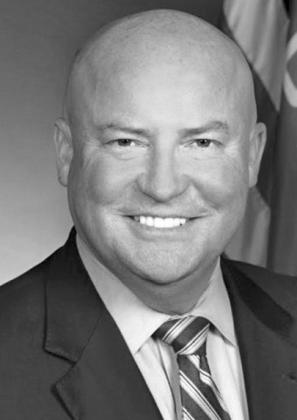The filing period for candidates wishing to seek political office in Oklahoma closed on Friday at 5 p.m. A total of 285 candidates declared their intentions to run for office, a relatively small number compared with other years, and several races had multiple people file.
Congratulations go out to those who were automatically re-elected without someone declaring against them. I was pleased to see several lawmakers who have worked closely with the Oklahoma Institute for Child Advocacy (OICA) go without a challenge. It is encouraging to have good men and women who understand the process and have knowledge of the issues important to the various children’s policies return to the Oklahoma State Capitol to continue their work.
Those with races will begin the campaign, the process of seeking votes from those they wish to serve. Campaigns can be arduous and expensive, so many candidates will kick their election efforts into “high gear” as they reach out to the voters who can cast a ballot for their election.
It is important, as these candidates visit you, that you ask them important questions regarding issues that you prioritize. As you are asking the questions, find out more about how candidates will work to help Oklahoma’s children and families. School issues will be important this year, as is the case in every election cycle, but there are also other issues impacting our youngest residents, such as hunger, safety, and family stability.
OICA will continue our longstanding tradition of submitting candidate questionnaires to those running for office to ascertain where each person stands on issues relating to children. Our surveys are not partisan and simply provide candidates with the opportunity to share their positions. When I served in the Legislature, I believed those surveys that only provided a “yes” or “no” answer were disingenuous; issues are too complex for a one-word answer.Itisimportanttoallowthose seeking public office the opportunity to explain in detail why they believe a certain policy direction might or might not be best for Oklahoma.
Wewillalsocontinueouranalysis of the legislation going through the process and issue our annual “Children’s Legislative Report Card” after the session. This will report how lawmakers voted on key children’s policies during this current session. We usually select 20-25 bills to grade based upon the final passage of a bill in each chamber.
The bills which I highlighted in a recent column will certainly be on that score sheet, along with others whichmightgainmomentum.OICA normally does not grade on school curriculum issues, but instead we look at bills which will improve the health and well-being of children. OurBoardofDirectorswillmakethe ultimate decision on these concepts based upon recommendations from our Advocacy Committee.
In addition, OICA is pleased to announce our final advocacy event for the legislative session. This will be a documentary screening for “Broken,” a film which highlights issues in Massachusetts similar to problems we faced in Oklahoma decades ago.
The event will be at 1 p.m. on Friday, May 10 at Tulsa’s Circle Cinema. We will also hold a panel discussion about ways to improve foster care issues in our state. Go tohttps://event.gives/okchildadvocacy for tickets and to see sponsorship opportunities.
OICA strongly supports all these bills. We are also keeping an eye on several bills our Board and Advocacy Committee feel are not in the best interest of Oklahoma’s children. I will highlight those issues in the coming weeks.The Oklahoma Institute for Child Advocacy was established in 1983 by a group of citizens seeking to create a strong advocacy network that would provide a voice for the needs of children and youth in Oklahoma, particularly those in the state’s care and those growing up amid poverty, violence, abuse and neglect, disparities, or other situations that put their lives and future at risk. Our mission statement: “Creating awareness, taking action, and changing policy to improve the health, safety, and well-being of Oklahoma’s children .

